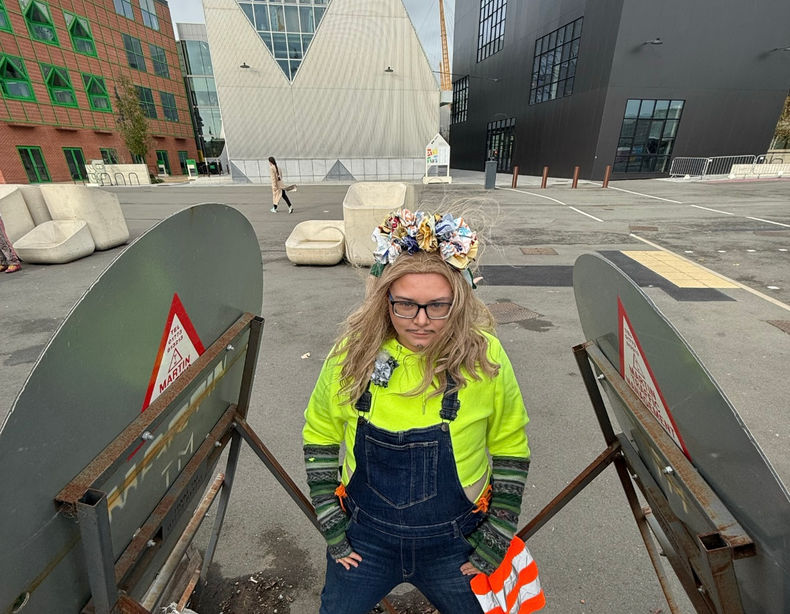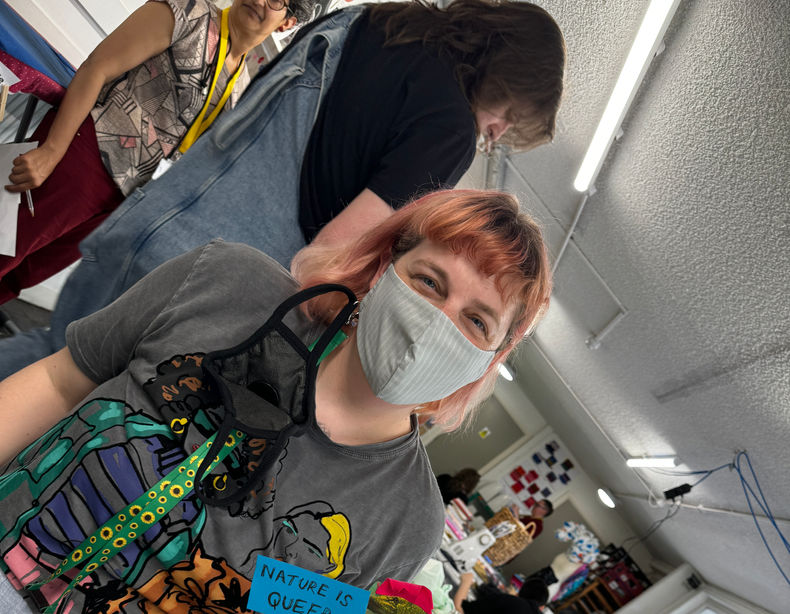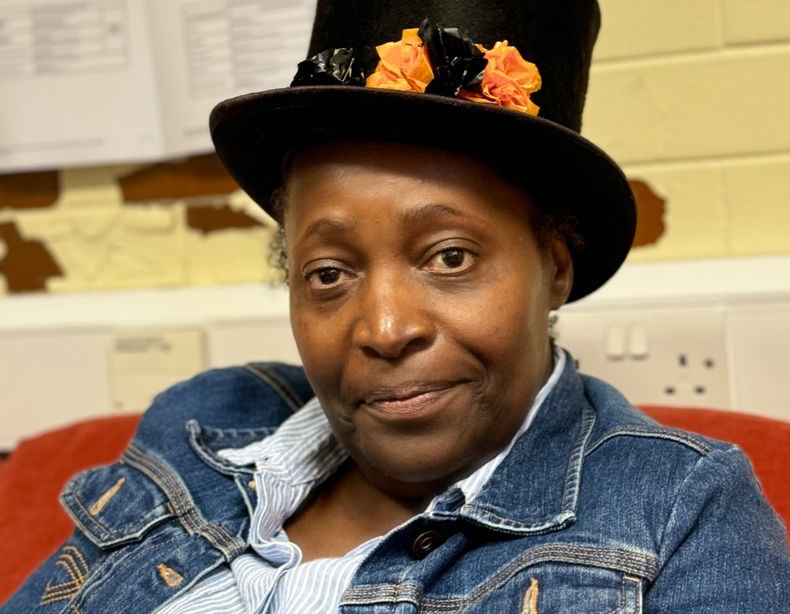Drag Declares Emergency
2020- ongoing
Inspired by Culture Declares Emergency
Collaborating with drag houses and LGBTQIA+ groups around England the project asks:
How can drag support the wellbeing of queer people and the health of planet Earth?
Drag Declares Emergency is led by Disabled sculptor and drag king Lady Kitt, started in 2020. It is currently funded through an Arts Council England Project Grant till Dec 2024 and supported by Craftspace, Birmingham, Festival of Thrift, Stockton, The NewBridge Proejct, Newcastle and QUEER CIRCLE, London.
Some stuff that's happned so far in the proejct:
-
Access centred online exhibition of drag outfits made from recycled, reused and natural materials
-
Workshops at QUEERCIRCLE (London), Festival of Thrift (Stockton), and MAC (Birmingham)
-
Essay about Drag as folk by Dr. Lucy Wright and article about the wider project by Kitt
-
Performances and parades (images above)
The wider project: The wider project aims to explore drag as contemporary folk art, developing environmentally responsible tools and techniques inspired and supported by LGBTQIA+ traditions of collaborative crafting ad activism (particularly in drag “houses” / chosen or “logical” families**). There’s a little more info below.
Further info:
*What is drag?
Performance which explores / plays with / challenges traditional presentations & expressions of, or ideas about, gender / sexuality. Forms of Drag have existed throughout history and all over the world, being created by people of all genders and none.
What is a drag king?: Drag performers whose work focuses on / explores ideas about masculinity. These performers are often (but by no means exclusively) female, non-binary or transgender. The term “drag king” was first used in print in 1972, but there is a long history of female / gender non conforming performers dressing as men / exploring masculinity in folk performance, theater, cabaret, opera, live art and burlesque. Celebrated performers include African American activist Stormé DeLarverie (who performed with Jewel Box Revue in the 1950s and 60s and was involved in the Stonewall riots) and Justin Bond, member of contemporary British drag troupe Drag Syndrome.
What are Drag Crafts? Physical making skills that contributor to drag performance. Things like costume making, wig making and makeup artistry.
What is Folk Art (why/ is) Drag Folk Art?: Wikipedia defines folk art as “…reflect(ing) the cultural life of a community… can include such forms as music, dance and narrative structures… (folk) art forms, both tangible and intangible, typically are developed to address a practical purpose… These artistic traditions are shaped by values and standards that are passed from generation to generation, most often within family and community, through demonstration, conversation, and practice.”
Contemporary drag (particularly in the USA and Northern Europe) is usually created by members of LGBTQIA+ communities, frequently for cabaret / night club / pride celebration settings. This work is often developed by groups of performers and crafts people who identify as part of local drag “houses” or families. These “houses” frequently provide a practically, emotionally and creatively supportive environment for members to make work. Houses often create safe, brave spaces in which members can express and explore their gender / sexuality. It is not unusual for specific regional “house styles” to develop amongst groups in terms of themes (often political), the form performances take and the design of costumes / make up etc. Though artists are sometimes paid to make drag (and some people make a living from the art form), drag largely exists outside of financial art making models, functioning as forms of activism, community building, self-expression and folk entertainment.
**As described by author Armistead Maupin.

























